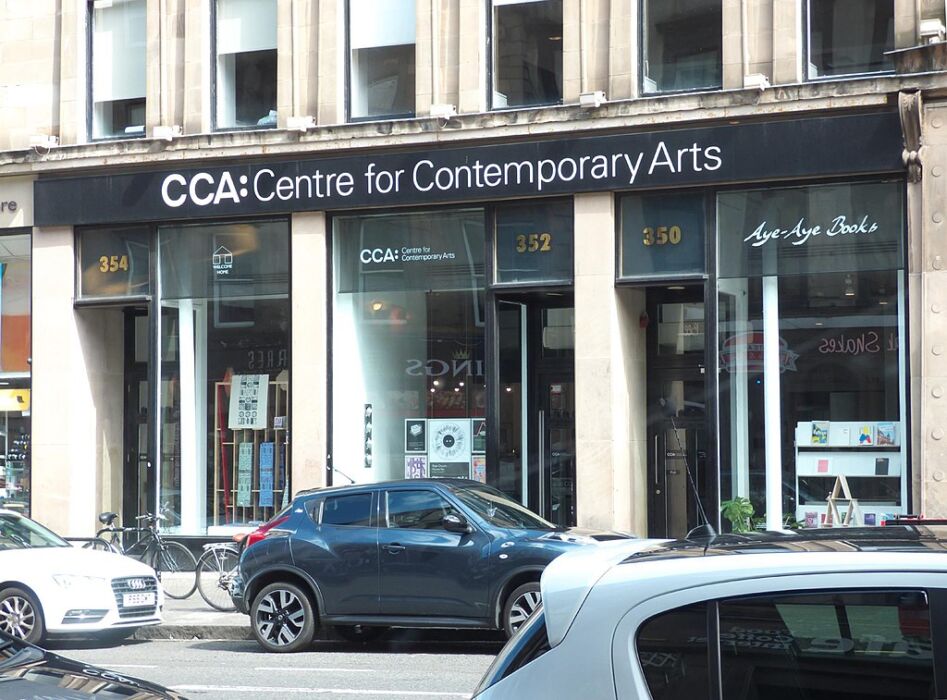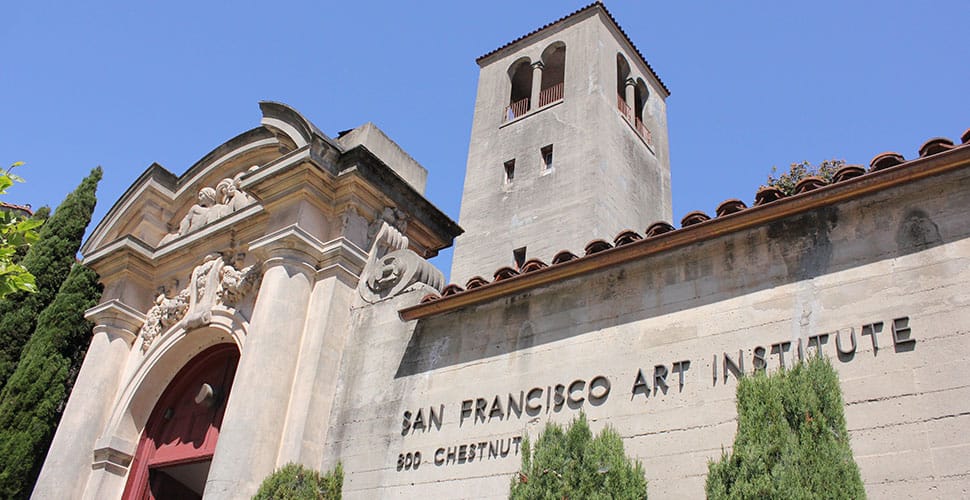“Get ready to discover new voices and fresh perspectives.” So says the slogan of New MoMA, the expanded version of the infamous museum which opened just a few days before the closing of the most recent Whitney Biennial, curated with the guidance of the same spirit.[1]
“New ideas and fresh perspectives” are, in other words, the ideas and perspectives of those who did not get proper representation in these major institutions that conduct the visual vocabulary of the American and worldwide art followers. Included are, of course, female artists, Black and Native American artists, and queer artists[2]. Now, since the museum is ready to contain these works, we, the viewers, should get ready, too. MoMA sets the visual vocabulary, and other institutions follow.
As a young artist with a decade long practice of regular visits in museums of contemporary art, I must admit, I have to do the work of getting ready. Looking at Black and Native American art is mostly pleasing and fascinating for me, risk free, for I am white and not American. But to see queer life represented on the walls of the most visited art spaces in the world I need to have a different kind of prepatation. All the queer people I know have a simultaneously strong, humurous, joyful and often painful attachment to their queer identity and to its uniqueness. And so do I. Bringing queer visibility to the gaze of the all-viewer – one who naively drifts into the museum just to see another of Van Gogh’s Sunflowers, or someone lonely seeking comfort in a piece by Hopper – is a task that comes with great responsibility.
One of the immediate complications I see with representation of queer life in public has to do with the delicate balance between the pleasure of being queer and the pleasure of looking at the queer; and how the two can contradict each other in cases of recklesness. A big part of the pleasure of being queer has to do with being a freak, a pervert, taking part in activities that are perverse, celebrating perversity among other perverts, without causing any harm to any one of the participants. In other words, queerness is being a pervert in the right set up.
The pleasure of looking at the queer is often possible only when this set up, this space, is penetrated, and the things that happen within this space are exposed. Thus, there are two kinds of spaces – the queer space, and the space created for the others, whoever they may be, for looking at the queer. Things don’t necessarily look the same in both spaces. What can be pleasurable and safe in the queer space can be easily translated as painful and frightening as soon as it’s exported to the white cube, just one floor below Monet’s Water Lilies. Questions come rushing as I look – to whom does the queer image belong? Who is creating the image? Who is looking at the image? Who is in the image? Do we know who we are looking at? Do we know that we are being looked at? In this essay I will try to unfold a suggestion of queer representation that is created with sensitivity and care, with the thrill of bringing examples of success and, perhaps, faliure. To have a stronger grip on the here and now I will focus on works and artists whose work is or was shown in the latest Whitney Biennial and New MoMA.
Before moving to New York I lived in Tel Aviv, where I was deeply entwined in the queer community. I knew a gay man who was a theatre director there, who had a great influence on the fringe theatre in the country during the last decade. One day I came across a post of his on Facebook. It was a photograph by Wolfgang Tillmans, The Cock, (Kiss)[3] and the caption was an intimate story. There was a time, he wrote, when he had no permanent place to call home, and all his nights were sleepovers at friends’ who were generous enough to host him on their couch or in their guest bedrooms. In absence of a real home, he had to mark his territory somehow, and he happened to have a postcard size reproduction of this photo which he would stick on the wall everywhere he went. The photo, a close up of two boys kissing, is one of Tillmans’ older works. The brutal flash of the camera makes the sweaty faces, dirty hair and clothes of the subjects glow. One boy is wearing a zip jacket, the other one a white, sweat-soaked t-shirt. The kiss is rather strangling, as if the boys are swallowing each others mouths instead of pecking each others’ lips. The act is full of aggression, the way something is when it’s done against one’s intention, out of necessity or pressure. It breaks the boundaries of shame. An action one would never speak of but is constantly thinking of doing. The boy with the sports jacket holds the head of his fellow kisser with a firm grip, like soccer players do when they embrace the one who scored a goal. It is a spectacle of masculinity that is at the same time charged with lust for the masculine.
I’m guessing that the man I know found comfort in this work not because it gave him the feeling that being gay is okay, but because he wasn’t feeling okay. He was alien, both because of his housing crisis and, I assume, because it never really feels like being gay is normal. But with Tillmans by your side, or just tacked on the wall above the couch you sleep on, you can feel free to never apologize.
Besides, The Cock, (Kiss) depicts a moment of youth and rawness, such painful impulsiveness, which, exciting as it may be, is fleeting. This event of revelation, of surrender to desire, is mostly lovely to look at from the vantage point of the present looking backwards onto the past. In this case I am referring to the queer perspective on the queer image, and particularly the one who is already out, and is happy to tell themselves that they have already crossed this bridge. When they give birth to themselves by finding out who it is they want to touch.
I want to return to the reassuring effect of Tillmans’ work through an additional example. In her book The Lonely City: Adventures in the Art of Being Alone, Olivia Laing has a generous chapter about the work of David Wojnarowicz, who was born a decade and a half before Tillmans, and whose work has a much darker, painful side, rising form a heavy fog of homophobia. Laing quotes a conversation between Wojnarowicz and Nan Goldin, where at some point Goldin asks him what he’d most like his work to achieve. “I want to make somebody feel less alienated – that’s the most meaningful thing to me,” he said. Later he added, “We can all affect each other, by being open enough to make each other feel less alienated.”[4]
Laing declares that she’d “been brought up by lesbians.”[5] While in the book she describes only a heterosexual relationship or rather the falling apart of a relationship, being a product of lesbian education sounds queer enough. This is why I trust her when she writes that Wojnarowicz’s recordings of sexual encounters in cruising spots are “electrically visual, electrically explicit.”[6] I also trust that this openness of his was a cure for her loneliness, her sense of alienation. There is room to critique Tillmans’ work, its kitsch and over aestheticization. Nonetheless, works that have an ability to reduce frustration and detachment from the world are doing an incredible service to the queer individual and to the world of art.
Not too far from the wall occupied by Tillmans’ works in MoMA I found the cheerful presence of Catherine Opie’s Dyke.[7] This work has a sister quite more interesting and dear, Self-Portrait/Cutting,[8] from the same year. Seemingly older than the dyke photographed in Dyke (but also shirtless and shot from the back), Opie reveals a bleeding wound-drawing on her skin. The drawing is a childish, clichéd illustration of the so-called perfect family setting: a house, two parents. There is smoke rising from the chimney so we know that the house is functioning, but the sun in the sky is half hidden by a fat cloud, almost twice as big as the house. Maybe the weather is so grim because both parents are women, a situation that is often accompanied by lack of clarity in the eyes of the beholder. A queer family doesn’t enjoy the privilege of a long, customary tradition. When things don’t fit neatly inside the structure we are used to, it feels like our vision is poor, as if we are looking through a cloud. In case, of course, that we are not prepared to look at a queer body which has an apetite for physical pain. I would like to add a note on the term “queer body” in this context, and on physical pain, too. By saying Opie’s body is a queer body I mean that when I look at her short haicut, the asymmetrical assembly of her earrings, her crouched masculine posture and wide chubby back, I recognize something very familiar. I see a member of my community. By saying appetite for pain I mean that, first, I know that Opie is involved in the S/M culture from her work and from reading about her.[9] But this is just a dry fact. The accurate arrangement of the frame, the choice of the calming, cold-toned wallpaper in the background, and the high quality of the photograph taken while bleeding are all evidence of the way she sees pain as habitual, welcome, safe.
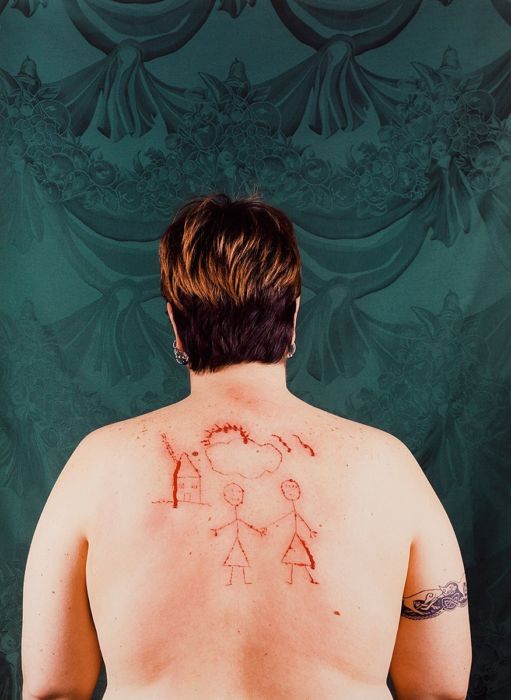
קת'רין אופי, "Self-Portrait/Cutting", 1993, צילום, © Catherine Opie, Solomon R. Guggenheim Museum, New York Purchased with funds contributed by the Collections Council, with additional funds from Mr. and Mrs. Aaron M. Tighe and the Robert Mapplethorpe Foundation, 2012
I found it compelling that in her book, The Argonauts, Maggie Nelson drew a line between Self-Portrait/Cutting and the YES ON PROP 8 signs,[10] an association I could never have drawn myself because I have never been to California. She recalls a conversation between her and her husband, artist Harry Dodge: “I don’t get it, I said to Harry. Who wants a version of the Prop 8 poster, but with two triangle skirts? Maybe Cathy does, Harry shrugged.”[11] This balance is exactly what gives Opie’s work it’s value – it is about queerness, maybe, and queer visibility and rights, and S/M lifestyle, but it it also about longing, desire for intimacy, about wanting stability and warmth, a house with a burning fireplace and a partner to share it with. It is about being an unusual, freakish, outstanding person with the capacity and hopes of the most common people. It’s about being human and looking at humans closely.
At first sight, the visual language of Elle Pérez has a lot in common with Opie’s. Pictures of queer people’s faces, bodies in motion, all staged, all delivered in fine quality by the hand of a skilled photographer. But for some reason, looking at Pérez’ photographs is burdensome, even maddening. Not like Opie’s work, where I find an engaging, familiar presence,with Pérez I feel distant, protective. Spending time with their pieces at the Whitney Bienial, I felt the oposite of being represented. Maybe it is a representation, but an extremely processed, looting, embellished one. I will try to unfold my resistance.
“Too often, the study of sexuality in art is dismissed if it departs from the iconographic depiction of sexual acts or bodies that are deemed to be erotically appealing.” This comment by David Getsy (in a conversation with Jennifer Doyle) seems quite accurate in this context. He is wondering “…how desire, the sexual, and the gendered operate beyond their straightforward depictions.”[12] I would like to make an assumption that the need to avoid the “straightforward depictions” comes at times when those depictions are so obvious they don’t add anything to reality. Instead, they are draining reality from meaning.
In the piece t[13] we see a hand holding a tiny flask of testosterone, ready to be injected, supposedly in the body of a female to male (F2M) trans person. The black and white photograph is rich with dramatic light and shadow contrast – an extreme aestheticization of a small, banal medical object that merely serves a concrete, necessary tool (amongst many other physical and emotional tools) in someone's private transition process. Without leaning on a person's life changing choice, without the viewer knowing in advance why this flask is useful at all (I have never seen a flask of insulin presented this way), the photograph only has formalistic value.
If Butler taught us that heteronormativity is an image so ideal that no one can act upon it perfectly, and Foucault was the one to realize that heterosexuality is a fiction used by the government to have control over citizens, then, of course, no one is truly hetronormative.[14] In other words, we are all more or less queer. For this reason I find every attempt to portray the queer community as a closed, special, isolated club of cool kids as a regressive act. Pérez’s New work 004[15] depicts two people I would identify as butch, or genderqueer, in an itntimate positioning. One of them looks in their twenties or thirties; they are sitting on a piece of furniture that looks like a beauty bed typically used by tattoo artists. With black rubber gloves on their hands they are holding a younger person from behind, maybe even a teenager, who is sitting on the ground and leaning back between the legs of the other. The youngster’s chest is tightly wrapped in nylon, hands bound behind their back. Thick needles are inserted into their skin on the upper part of the left breast. On the right side of the chest there are bold lined tattoos of something that looks like the core of an eaten apple, and a slim drawing of a heart.
The photograph is heavy with signifiers of a specific lifestyle: the piquerism, the bondage, the black gloves, the haircuts, the tattoos, the bed. Everything looks ritualistic, over-stylized, polished. In real life, all these things do happen, but not necessarily all together at the same time. It could be enough for the viewer to see the needles in the young flesh, and the grip of an older friend/lover/top/expert. It’s pleasurable to look at the black gloves, but then the bed can be left outside the frame. Tattoos are a big part of queer culture, but do we all have those cartoonish, easily digestible tattoos? Is this how queer life looks, or is it how it’s modeled? “Queer/feminist art practices will hover over the thingness of the body as a way of exploring the weight and history of that body, as a way of exploring the politics of making bodies into things, and things into bodies.” [16] In this case, the opposite is true. The body is not explored, nor questioned. It shines just as it is, just like the body of the photoshopped fashion model, telling me nothing but the fact she or he were hired by this and that brand or designer, and before the campaign is over they will be swiftly replaced.
I want to get back to the idea that there is a difference between the pleasure of being queer and the pleasure of looking at the queer, and the queer space being penatrated in order to allow others to see what is happening inside. I know that Pérez is a queer person, and being an artist they have a full right to create images according to their preference. But like I wrote before, every queer person I know insists on being queer in their own way, and in this fragile world each one might feel like they have both allies and opponents. It is very important to allow a glimpse on queer rituals, style, habits, moods. But overcooking the imagery so that the voyeur can swallow it without coughing feels wrong. Opie is fond of pain, yes, but she is not showing off the shiny needles. Tillmans, too, is taking pictures of people touching each other, but in a way that seems spontaneous and clumsy, rather than polite and photogenic.
It is barbaric to generalize ways of making art, and to try and tell right from wrong. There is no way to make the art someone else would make, just as it’s impossible to live someone else’s life. An artist’s work is a direct product of the conditions and choices of the individual. Nonetheless, I find that artists who make work first and foremost for themselves, out of an intimate contract with their own desires and needs, end up producing work that can nourish others in the most surprising and meaningful ways. There was no room this time to expand on the works of Félix González-Torres, Pipilotti Rist, Bruce LaBruce, Ana Mendieta, Barbara Hammer, Paul Mpagi Sepuya, A.L. Steiner, Juliana Huxtable, Ryan Trecartin and many more. But I believe strongly that those who make work to free themselves are freeing others, and this kind of liberation is organic in all art spaces and does good for the viewer, whomever it may be.
[1]“More than half of the artists were women”; “four identify themselves as gender non-conforming”; and “more than half belong to racial or ethnic minorities,” including eight “identifying as Native American.”Painting Over the Ditry Truth, Rhonda Lieberman, The New Republic, September 23, 2019 https://newrepublic.com/article/154991/rich-art-museum-donors-exploit-identity-politics-launder-reputations-philanthropy
[2] “a profound consideration of race, gender, and equity; and explorations of the vulnerability of the body” from the curatorial statement of the Whitney Biennial 2019, by Jane Panetta and Rujeko Hockley.
[3] The Cock, (Kiss), 2002 Chromogenic color print on paper, 300 x 400mm.
[4] Olivia Laing, The Lonely City: Adventures in the Art of Being Alone (New York: Picador, 2016),135.
[5] Olivia Laing, The Lonely City: Adventures in the Art of Being Alone (New York: Picador, 2016),125.
[6] Olivia Laing, The Lonely City: Adventures in the Art of Being Alone (New York: Picador, 2016),112.
[7] Catherine Opie, Dyke, 1993, Chromogenic color print, 40×30’’.
[8] Catherine Opie, Self-Portrait/Cutting, 1993, Chromogenic color print.
[9] Nelson, Maggie. The Argonauts. (London, UK: Melville House Press, 2016), 81.
[10] Nelson, Maggie. The Argonauts. (London, UK: Melville House Press, 2016), 12.
[11] Nelson, Maggie. The Argonauts. (London, UK: Melville House Press, 2016), 13.
[12] Relyae, Lane, ed. “Queer Formalism: Jennifer Doyle and David Getsy in Conversation.” Art Journal 72, no. 4 (2013): 59–71.
[13] Elle Pérez, t, 2019.
[14] Paul B.Preciado summarized this point accurately: “hetrosexuality is anatomopolitical technology and not and underlying natueal origin” Preciado, Paul B., et al. Countersexual Manifesto. Columbia University Press, 2018. 29.
[15] Elle Pérez, New work 004, 2019.
[16] Relyae, Lane, ed. “Queer Formalism: Jennifer Doyle and David Getsy in Conversation.” Art Journal 72, no. 4 (2013): 59–71.


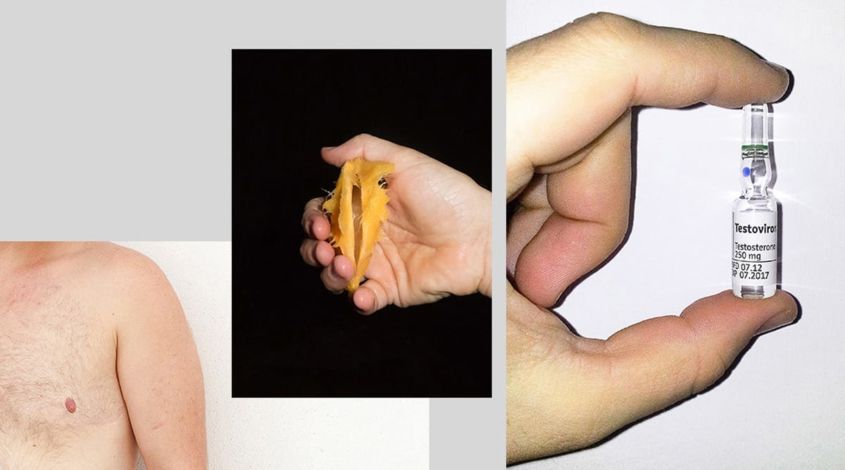

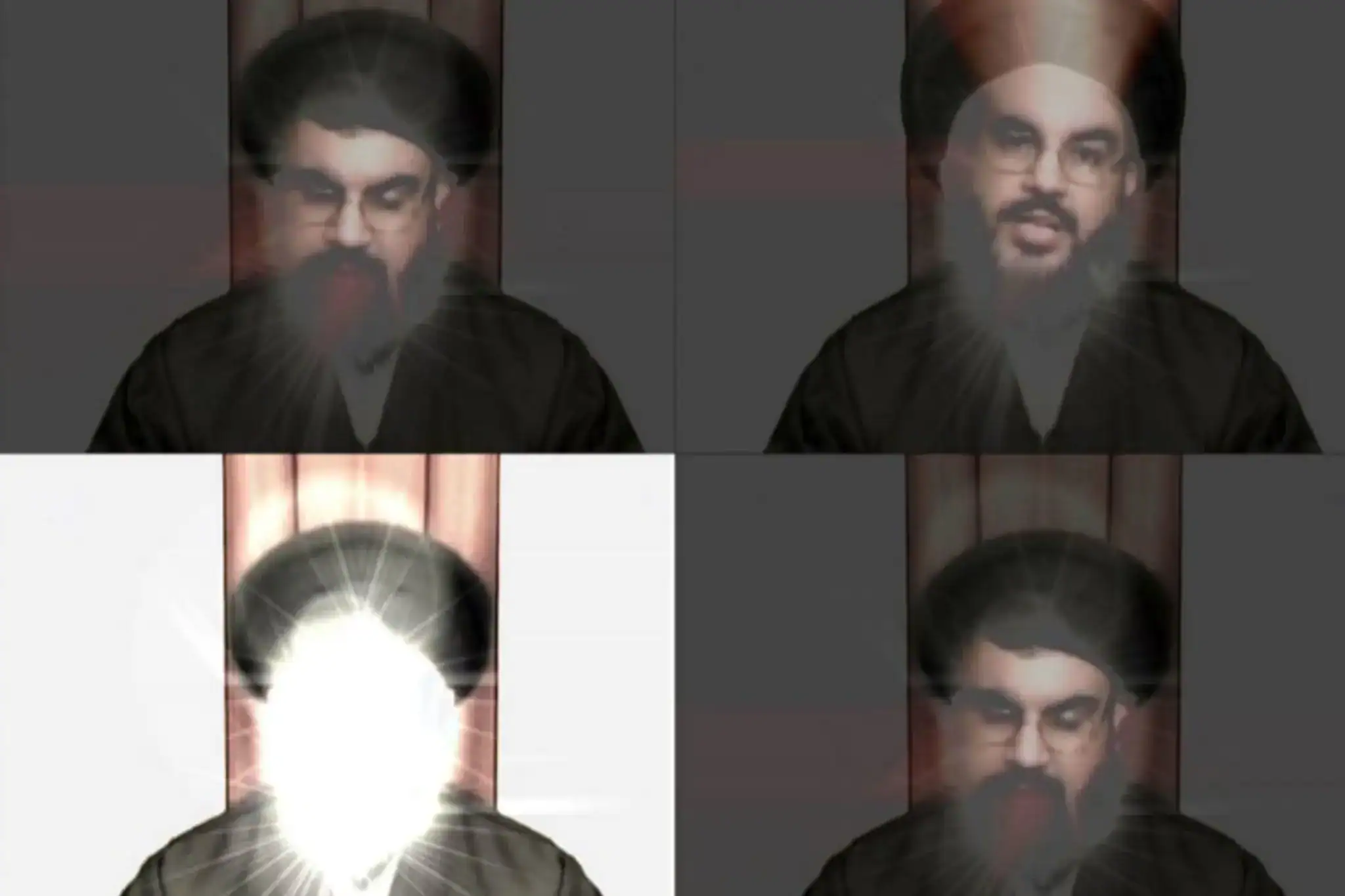 סוכנות קריאטיב אוסטרליה (Creative Australia), הגוף הממשלתי האחראי למימון האמנות במדינה, הודיעה כי האמן חאלד סבסאבי, שגדל בלבנון, והאוצר מייקל דאג’וסטינו ישובו להוביל את הביתן האוסטרלי בביאנלה לאמנות בוונציה בשנת 2026. ההחלטה באה לאחר הדחתם בפברואר בעקבות לחץ פוליטי, בשל עבודות קודמות של סבסאבי שעוררו סערה, בהן סרטון הכולל נאום של מזכ"ל חזבאללה לשעבר, חסן נסראללה. הסרט הוביל להאשמה בסנאט האוסטרלי כי מדובר ב"עידוד לטרור", על רקע מתיחות פוליטית גוברת ואקלים אנטישמי במדינה.
סוכנות קריאטיב אוסטרליה (Creative Australia), הגוף הממשלתי האחראי למימון האמנות במדינה, הודיעה כי האמן חאלד סבסאבי, שגדל בלבנון, והאוצר מייקל דאג’וסטינו ישובו להוביל את הביתן האוסטרלי בביאנלה לאמנות בוונציה בשנת 2026. ההחלטה באה לאחר הדחתם בפברואר בעקבות לחץ פוליטי, בשל עבודות קודמות של סבסאבי שעוררו סערה, בהן סרטון הכולל נאום של מזכ"ל חזבאללה לשעבר, חסן נסראללה. הסרט הוביל להאשמה בסנאט האוסטרלי כי מדובר ב"עידוד לטרור", על רקע מתיחות פוליטית גוברת ואקלים אנטישמי במדינה. 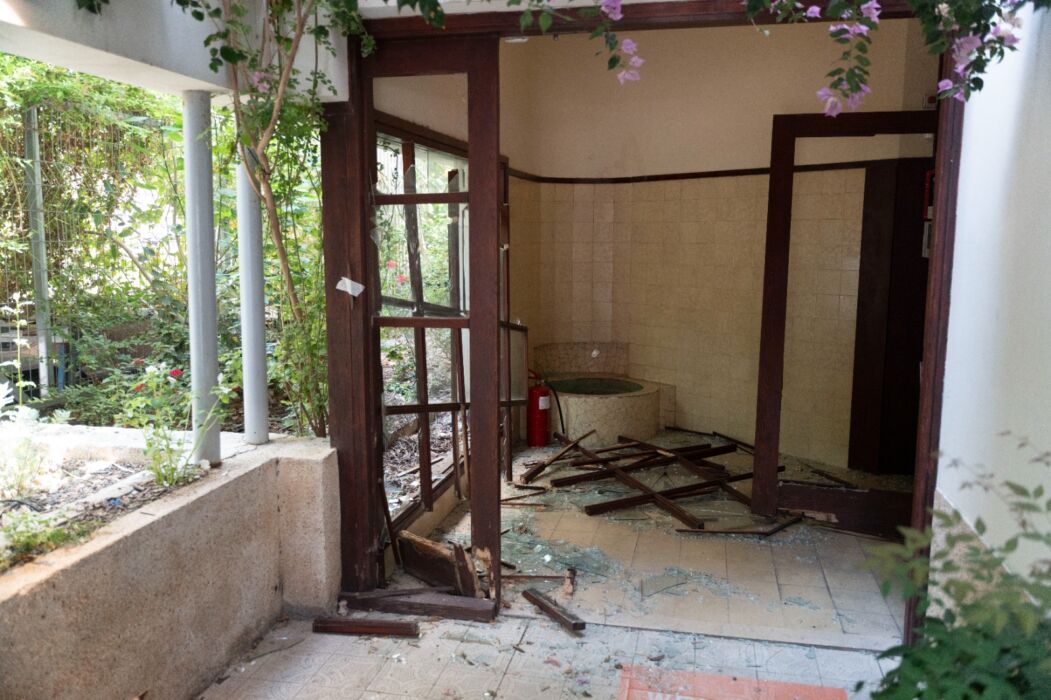 חמישה מבנים היסטוריים לשימור בכיכר ביאליק - מוזיאון העיר, בית ביאליק, בית ליבלינג, פליציה ובית ראובן - נפגעו כתוצאה מהדף פיצוץ הטיל שנפל במרכז תל אביב. הנזקים כוללים דלתות מקוריות שנעקרו, חלונות שנופצו ותריסים שנהרסו. בבית ביאליק נפגעה גם יצירת אמנות מרכזית של חיים ליפשיץ מהעשרים של המאה הקודמת, המתעדת את ביאליק ורבניצקי בעבודתם על ספר האגדה.
חמישה מבנים היסטוריים לשימור בכיכר ביאליק - מוזיאון העיר, בית ביאליק, בית ליבלינג, פליציה ובית ראובן - נפגעו כתוצאה מהדף פיצוץ הטיל שנפל במרכז תל אביב. הנזקים כוללים דלתות מקוריות שנעקרו, חלונות שנופצו ותריסים שנהרסו. בבית ביאליק נפגעה גם יצירת אמנות מרכזית של חיים ליפשיץ מהעשרים של המאה הקודמת, המתעדת את ביאליק ורבניצקי בעבודתם על ספר האגדה. 